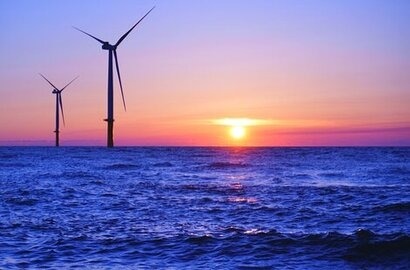
In the aftermath of a challenging period for the European renewables sectors, the introduction of the European Wind Power Package marks a pivotal moment, steering the industry back on course. However, substantial work lies ahead, according to Cristina Fernández, Country Director, MD (Germany) and Director for Sales (Continental Europe) at energy transition project management and engineering consultancy K2 Management.
Ms Fernández emphasises the need for concerted efforts based on three critical observations:
Varied clarity in measures: While some outlined measures present specific, tangible actions, others remain at a high level, ambiguous and open to interpretation.
Uncertainty in addressing industry challenges: The industry grapples with the absence of clear solutions to persistent challenges, including inflation, supply chain uncertainties, and complexities within the auction.
Implementation challenges across member states: The true impact of the package relies on integration into the local legislation of each member state. This process introduces potential variations in speed and effectiveness, demanding careful consideration and coordination.
Announced on the 24th October, the package comprises fifteen actions set to influence not only the wind industry but also extend their impact to other sectors such as solar. The measures recognise the industry’s difficulties, organised into six main pillars of concerted action. While certain steps, such as the European Investment Bank’s commitment to providing de-risking tools and guarantees for EU wind companies, manifest as concrete actions, others remain vague and unclear.
Further efforts are essential to effectively coordinate these initiatives across member states and support the specific needs of the industry. In recent years, a lack of industry wide alignment has created a climate of uncertainty, compounding with competitive pressures from abroad.
With project pipelines at the whim of high costs, ambitious capacity targets, and variable regional regulation, there’s a growing cautiousness from investors about where best to set their sights. The failure of the UK’s Round 5 Contracts-for-Difference (CfD) auctions, and Ørsted’s decisions to cancel its US projects – Ocean Wind 1 and Ocean Wind 2 – raise questions never-before-asked about offshore wind – can the industry escape its spiralling costs? Can such important projects really be derailed by clumsy policymaking?
In an effort to address concerns in the UK, the government has increased the maximum strike price ahead of the next CfD auction, to ensure a more successful story in Round 6 for offshore wind.
“On the one hand, there’s the issue of communication” added Ms Fernández, emphasising the complexity of this situation and identifying it as a two-fold problem. “For instance, there is considerable interest in establishing offshore wind farms across the Nordics, yet a lack of clarity on how to proceed with these projects, coupled with external and internal pressures, has hindered progress. In contrast, Lithuania completed its first offshore wind tender in June, awarding 700 MW, with a second tender scheduled for January 2024. Estonia, too, advances due to a clear regulatory framework. On the other hand, there’s money. Projects have been grappling with ongoing price fluctuations which significantly impact return on investment. This unpredictability poses a particular challenge for long-term projects with high up-front costs, as it dissuades potential investors. While the Wind Power Package initiates some strategies to address this issue, such as facilitating EU manufacturers' access to foreign markets, these measures still lack clarity, falling short of providing a comprehensive solution.
At the same time, the rush to maximise short term profits will harm the industry in the long run. Despite OEMs emphasising the importance of optimising existing platforms, market pressures, including higher levelised cost of energy (LCOE) requests from project developers and non-EU wind turbine generator supplies introducing larger turbines, compel them to shift their attention to the development of larger platforms. This pivot comes with well-known consequences, including additional costs for companies already grappling with their current cost basis.
We need the EU to coordinate a cross-industry agreement to focus on standardising existing platforms. This will ensure more reliable turbines, lower supply chain costs due to the procurement of standard components, and more long-term commitments to current platforms.
Of course, Europe remains committed to ambitious targets, aiming to domestically manufacture at least 40 percent of its clean technology by 2030, as outlined in the Net Zero Industry Act. However, achieving this target will continue to be an uphill battle unless all relevant factors are carefully considered.
Amidst doubts about the bloc’s recent competitiveness, achieving a scale-up in clean energy production requires a pact that involves active cooperative from all engaged in the industry. A critical aspect lies in the alignment of interests – particularly if OEMS advocate for the continued development of existing platforms, project developers should support this initiative. This alignment ensures a return to healthy, reliable, and sustainable business.”
For additional information:

